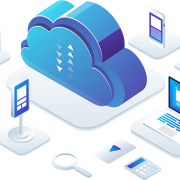Cloud migration is the new normal, but it still doesn’t come without its hurdles. Leslie Lang from cloud software global leader Nutanix shares an article on Forbes of the common cloud migration dilemmas businesses face. For Lee Caswell, SVP Product and Solutions Marketing at Nutanix, this fragmentation of information reminds him of printing products in the 80s and 90s. “Like the advent of all-in-one printers, a business’s data and applications can now be managed through a single platform—streamlining information no matter how dispersed, disorganized or distributed it may be,” says Lang. Below, Caswell and Lang offer their insights on six of the most common cloud migration challenges, and how to solve them.
- Refactoring. “Almost every organization surveyed in the Nutanix Enterprise Cloud Index—an annual survey of 1,450 global IT decision-makers—moved one or more applications to a different IT infrastructure in the previous year. Most agreed that moving applications can be complex and expensive, but almost all agreed that having a single platform to manage it all would be beneficial.”
- AI Integration. “As organizations increasingly focus investments on implementing AI solutions, there’s an increased demand for cloud services that work with AI and between data centers, traditional cloud services and edge computing. A dual vendor strategy can provide this.”
- Lock-In. “Caswell points to Broadcom’s recent acquisition of VMware as another reason the dual vendor approach can be helpful: to protect against lock-in as customers worry Broadcom might increase costs. Companies like Nutanix can offer software that works in an existing VMware environment. ‘We can go and migrate any workloads running on VMware so they can seamlessly come to Nutanix,’ Caswell says, which provides the flexibility to move companies easily to the cloud.
- Security. “Data security and risk exposure are also common concerns about migrating data to the cloud. Consulting firms like Nutanix allows an organization locate its data where it thinks it will be most secure. ‘You could do things like have a disaster recovery system that goes and does disaster recovery to the cloud and then allows you to go and restore back in an on-prem environment. Or you could recover back in the cloud directly. So, you can distribute where your data is,’ says Caswell.”
- Skill Shortages. “Many companies lack the employees they need to migrate their data to the cloud. If you have data on Azure, Amazon and Google clouds, for example, and have different teams for each, plus your own data center team, an AI team, and your containers team—then all of the sudden, you’ve got an explosion of resources and consumption that isn’t sustainable, Caswell points out. It’s where standardizing on software-based infrastructure becomes a win. You can run your applications identically, no matter where they reside, with just one team.”
- A Lack Of Help. Choosing the best implementation team is critical as they will be your go-to for help. Consulting firms like Nutanix prioritize providing excellent support for their customers cloud platform.
For Full Article, Click Here




Leave a Reply
Want to join the discussion?Feel free to contribute!